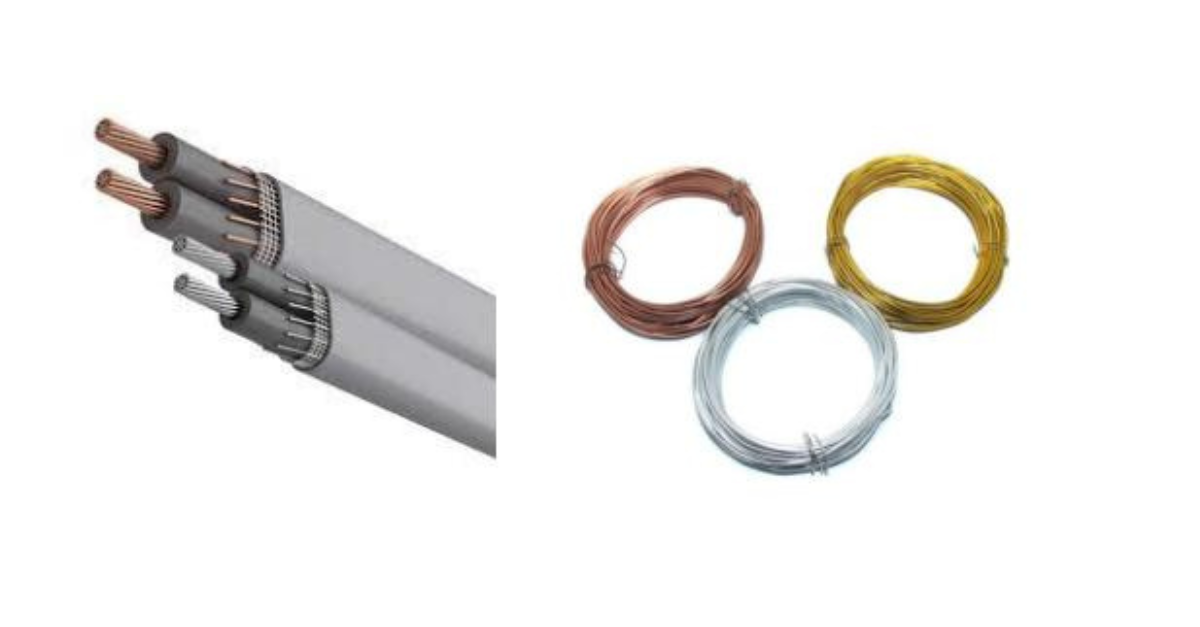The main differences between bare stainless steel wires and insulated cables lie in their construction, protective properties, and suitability for different applications. Here’s a detailed comparison:
1. Construction and Composition
- Bare Stainless Steel Wires:
- These are stainless steel wires without any external coating or insulation. They are made from stainless steel alloys such as 304, 316, or 302, providing inherent resistance to corrosion, high tensile strength, and durability.
- They consist only of the metallic core, which is ideal for applications requiring exposed wires with high strength and resistance to environmental factors.
- Insulated Cables:
- Insulated cables consist of a conductive wire (which could be made of copper, aluminum, or stainless steel) wrapped in a layer of insulating material, such as PVC, rubber, or Teflon.
- The insulation serves to prevent short circuits, protect the conductor from external environmental elements, and ensure safe electrical operation.
2. Protection and Safety
- Bare Stainless Steel Wires:
- Bare wires do not have any insulation, meaning they are exposed to the environment. This can pose a safety risk, especially in applications where electrical conductivity is a concern or where direct contact with the wire could cause harm.
- They are suitable for mechanical applications, but not for conducting electrical current unless they are safely contained or insulated in a system.
- Insulated Cables:
- The insulating layer protects the conductive wire from physical damage, moisture, corrosion, and electrical hazards. It also ensures that there is no accidental contact with live wires, reducing the risk of electric shock and short circuits.
- They are specifically designed for electrical applications and ensure safe transmission of electrical power.
3. Electrical Conductivity
- Bare Stainless Steel Wires:
- Stainless steel, although strong and corrosion-resistant, is not as electrically conductive as materials like copper. Bare stainless steel wires are generally used in mechanical, structural, or support applications rather than for efficient electrical conduction.
- However, they are used for grounding, communication lines, and other non-high-current electrical uses.
- Insulated Cables:
- The conductor inside insulated cables can be made from highly conductive materials like copper or aluminum, which ensures efficient power transfer and minimal energy loss.
- Insulation does not affect the conductivity but prevents direct contact, ensuring that electrical energy is transmitted safely to the destination.
4. Applications
- Bare Stainless Steel Wires:
- Mechanical and Structural: Used in rigging, suspension, and lifting systems, stainless steel wires are often used for their high tensile strength in applications like cranes, suspension cables, and other heavy-duty systems.
- Grounding and Bonding: Used in electrical grounding systems where insulation is not necessary but corrosion resistance and strength are critical.
- Control Cables in Harsh Environments: In cases where environmental exposure is crucial (e.g., marine, offshore applications), bare stainless steel wires offer durability without risk of rust or corrosion.
- Insulated Cables:
- Electrical Wiring: Insulated cables are commonly used for wiring electrical devices, machinery, lighting systems, and consumer appliances, where safety and electrical conduction are priorities.
- Power Transmission: In power systems, insulated cables are used to safely transmit high-voltage electricity over long distances without the risk of exposure to external elements.
- Industrial Applications: In environments with electrical equipment or machinery, insulated cables are used to ensure safe operation of circuits, protecting workers and components from electrical faults.
5. Durability and Environmental Resistance
- Bare Stainless Steel Wires:
- Highly resistant to corrosion and weathering, bare stainless steel wires can last for extended periods in harsh outdoor environments without degrading.
- They do not provide any protection against physical damage, so they are susceptible to wear and tear from impacts or abrasions unless adequately supported.
- Insulated Cables:
- Insulated cables, depending on the type of insulation used, provide varying degrees of protection against heat, cold, moisture, UV radiation, and chemicals.
- The insulation adds an extra layer of protection against external conditions and mechanical damage, increasing the overall lifespan of the cable.
6. Flexibility and Handling
- Bare Stainless Steel Wires:
- Bare wires are relatively stiff and may not be as flexible as insulated cables, making them more challenging to install in some applications.
- They are typically used in situations where rigidity is beneficial, such as in support structures or static installations.
- Insulated Cables:
- Insulated cables are designed for flexibility and ease of installation. The insulation allows the cables to bend and adapt to various routes or installations.
- They can be easily cut to length and handled without the risk of direct exposure to the conductive material, making them safer for both installers and end users.
7. Cost
- Bare Stainless Steel Wires:
- Bare stainless steel wires are generally less expensive than insulated cables because they only consist of the wire itself without the added cost of insulation materials.
- The cost is mainly driven by the alloy composition and the manufacturing process, with stainless steel often being more expensive than copper.
- Insulated Cables:
- Insulated cables tend to be more expensive due to the added costs of insulation materials and the manufacturing processes involved in ensuring electrical safety and performance.
- However, the cost is justified by their safety, functionality, and compliance with electrical standards for most applications.
Conclusion
- Bare stainless steel wires are ideal for mechanical and structural applications that require strength, corrosion resistance, and minimal electrical conduction.
- Insulated cables, on the other hand, are specifically designed for electrical applications, offering the necessary safety, protection, and efficiency to handle electrical power transmission and distribution safely.
Hashtags
#BareStainlessSteelWire #InsulatedCables #WireVsCable #StainlessSteelWireVsInsulatedWire #ElectricalWiringTypes #BareWireVsInsulatedCable #MaterialDifferences #ApplicationsAndUses #SafetyAndProtection #DurabilityAndStrength #ElectricalConductivity #ResistanceToEnvironmentalFactors #FlexibilityAndInstallation #CostComparison #MaintenanceAndRepair














